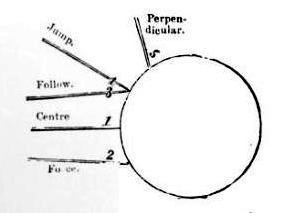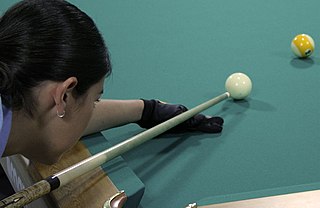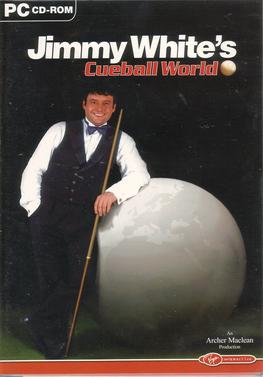This article needs additional citations for verification .(January 2011) |

Baize is a coarse woollen (or in cheaper variants cotton) cloth, similar in texture to felt, but more durable.
This article needs additional citations for verification .(January 2011) |

Baize is a coarse woollen (or in cheaper variants cotton) cloth, similar in texture to felt, but more durable.
A mid-17th-century English ditty – much quoted in histories of ale and beer brewing in England – refers to 1525:
Hops, heresies, bays, and beer;
Came into England all in one year.
Heresies refers to the Protestant Reformation, while bays is the Elizabethan spelling for baize [1] (though bay and baize eventually came to describe two similar but distinguishable types of cloth, as described below).
Baize is often used on billiard tables to cover the slate and cushion s, and is often used on other kinds of gaming tables (usually gambling) such as those for blackjack, baccarat, craps and other casino games. It is also found as a writing surface, particularly on 19th century pedestal desks.
The surface finish of baize is coarse, thus increasing rolling resistance and perceptibly slowing billiard balls. Baize is available with and without a perceptible nap. Snooker, in which understanding nap effects is part of the game, uses the nappy variety, while pool and carom billiards use the napless type.
For gaming use, baize is traditionally dyed green, in mimicry of a lawn (see Cue sport, "History"), though wide variety of table colours have become accepted. Bay was similar stuff to baize, but lighter in weight and with a shorter nap. [2]

Cue sports are a wide variety of games of skill played with a cue, which is used to strike billiard balls and thereby cause them to move around a cloth-covered table bounded by elastic bumpers known as cushions.

Eight-ball is a discipline of pool played on a billiard table with six pockets, cue sticks, and sixteen billiard balls. The object balls include seven solid-colored balls numbered 1 through 7, seven striped balls numbered 9 through 15, and the black 8 ball. After the balls are scattered with a break shot, a player is assigned either the group of solid or striped balls once they have legally pocketed a ball from that group. The object of the game is to legally pocket the 8-ball in a "called" pocket, which can only be done after all of the balls from a player's assigned group have been cleared from the table.

Snooker is a cue sport played on a rectangular billiards table covered with a green cloth called baize, with six pockets, one at each corner and one in the middle of each long side. First played by British Army officers stationed in India in the second half of the 19th century, the game is played with twenty-two balls, comprising a white cue ball, fifteen red balls, and six other balls—a yellow, green, brown, blue, pink, and black—collectively called the colours. Using a cue stick, the individual players or teams take turns to strike the cue ball to pot other balls in a predefined sequence, accumulating points for each successful pot and for each time the opposing player or team commits a foul. An individual frame of snooker is won by the player who has scored the most points. A snooker match ends when a player reaches a predetermined number of frames.

English billiards, called simply billiards in the United Kingdom and in many former British colonies, is a cue sport that combines the aspects of carom billiards and pool. Two cue balls and a red object ball are used. Each player or team uses a different cue ball. It is played on a billiards table with the same dimensions as one used for snooker and points are scored for cannons and pocketing the balls.

A billiard ball is a small, hard ball used in cue sports, such as carom billiards, pool, and snooker. The number, type, diameter, color, and pattern of the balls differ depending upon the specific game being played. Various particular ball properties such as hardness, friction coefficient, and resilience are important to accuracy.

Carom billiards, also called French billiards and sometimes carambole billiards, is the overarching title of a family of cue sports generally played on cloth-covered, pocketless billiard tables. In its simplest form, the object of the game is to score points or "counts" by caroming one's own cue ball off both the opponent's cue ball and the object ball on a single shot. The invention as well as the exact date of origin of carom billiards is somewhat obscure but is thought to be traceable to 18th-century France.

Russian pyramid, also known as Russian billiards, is a form of billiards played on a large billiard table with narrow pockets. It is popular across Eastern Europe as well as countries of the former Soviet Union/Eastern Bloc. In Western countries, the game is known as pyramid billiards, or simply pyramid within professional circles.

A billiard table or billiards table is a bounded table on which cue sports are played. In the modern era, all billiards tables provide a flat surface usually made of quarried slate, that is covered with cloth, and surrounded by vulcanized rubber cushions, with the whole thing elevated above the floor. More specific terms are used for specific sports, such as snooker table and pool table, and different-sized billiard balls are used on these table types. An obsolete term is billiard board, used in the 16th and 17th centuries.

Pool is a classification of cue sports played on a table with six pockets along the rails, into which balls are shot. Each specific pool game has its own name; some of the better-known include eight-ball, blackball, nine-ball, ten-ball, seven-ball, straight pool, one-pocket, and bank pool. Eight-ball is the most frequently played discipline of pool, and is often thought of as synonymous with "pool".

A rack is a piece of equipment that is used to place billiard balls in their starting positions at the beginning of a pocket billiards game. Rack may also be used as a verb to describe the act of setting billiard balls in their starting positions, or as a noun to describe a set of balls that are in their starting positions.
The following is a glossary of traditional English-language terms used in the three overarching cue sports disciplines: carom billiards referring to the various carom games played on a billiard table without pockets; pool, which denotes a host of games played on a table with six pockets; and snooker, played on a large pocket table, and which has a sport culture unto itself distinct from pool. There are also games such as English billiards that include aspects of multiple disciplines.

Cue sports techniques are a vital important aspect of game play in the various cue sports such as carom billiards, pool, snooker and other games. Such techniques are used on each shot in an attempt to achieve an immediate aim such as scoring or playing a safety, while at the same time exercising control over the positioning of the cue ball and often the object balls for the next shot or inning.

In the history of textiles, frieze is a Middle English term for a coarse woollen, plain weave cloth with a nap on one side. The nap was raised by scrubbing it to raise curls of fibre, and was not shorn after being raised, leaving an uneven surface.
Carom billiards and pool are two types of cue sports or billiards-family games, which as a general class are played with a stick called a cue which is used to strike billiard balls, moving them around a cloth-covered billiard table bounded by rubber cushions attached to the confining rails of the table.
American snooker is a cue sport played almost exclusively in the United States, and strictly on a recreational, amateur basis. Diverging from the original game of snooker, rules for American snooker date back to at least 1925, and have been promulgated by the Billiard Congress of America (BCA) since the mid-20th century. The game is in decline, as the standardized international rules have largely supplanted it.

A cue stick is an item of sporting equipment essential to the games of pool, snooker and carom billiards. It is used to strike a ball, usually the cue ball. Cues are tapered sticks, typically about 57–59 inches long and usually between 16 and 21 ounces (450–600 g), with professionals gravitating toward a 19-ounce (540 g) average. Cues for carom tend toward the shorter range, though cue length is primarily a factor of player height and arm length. Most cues are made of wood, but occasionally the wood is covered or bonded with other materials including graphite, carbon fiber or fiberglass. An obsolete term for a cue, used from the 16th to early 19th centuries, is billiard stick.

Jimmy White's Cueball World is a sports simulation video game published by Virgin Interactive as the sequel to Jimmy White's 2: Cueball, itself a sequel to Jimmy White's 'Whirlwind' Snooker. The development team once again being led by Archer Maclean, who designed the other two Jimmy White titles. The game was released in December 2001 in Europe, with a North American release was planned to be released a year later by Titus Software under a budget range using the Virgin Interactive brand name. PlayStation 2 and Xbox versions were planned, but were later cancelled.
Ahmed Aly Elsayed is an American professional snooker player who has won the United States Amateur Championship a record six times, having won three consecutive titles between 2009 and 2011, and another three consecutive titles between 2018 and 2021. He participated in the 2022 World Seniors Championship at the Crucible Theatre in Sheffield, England, becoming the first American to compete at the Crucible. He lost in the first round to Wayne Cooper. He turned professional in the 2023–24 season after earning a two-year tour card by winning the 2022 Pan American Amateur Championship. Former world champion Cliff Thorburn and top snooker coach Chris Henry advised him on playing professionally.
Bay was a napped coarse woolen cloth, introduced to England by Dutch immigrants in the 16th century. It was produced in Essex at Colchester and Bocking, and also in various towns in the West of England. Production continued until the 19th century.
Slosh is a cue sport played on a snooker table. The game features seven balls, coloured white, yellow, green, brown, blue, pink and black, with points being scored for pocketing or playing caroms and cannons off object balls. The game is played to a score of 100 points, or a length of 30 minutes. First played in the early 1900s, not much is known about the game's origins.
Heaton distinguished between bay and baize: 'the bay was light, baise is heavy and with a long nap' (Letter Books of Joseph Holroyd, p. 11n).